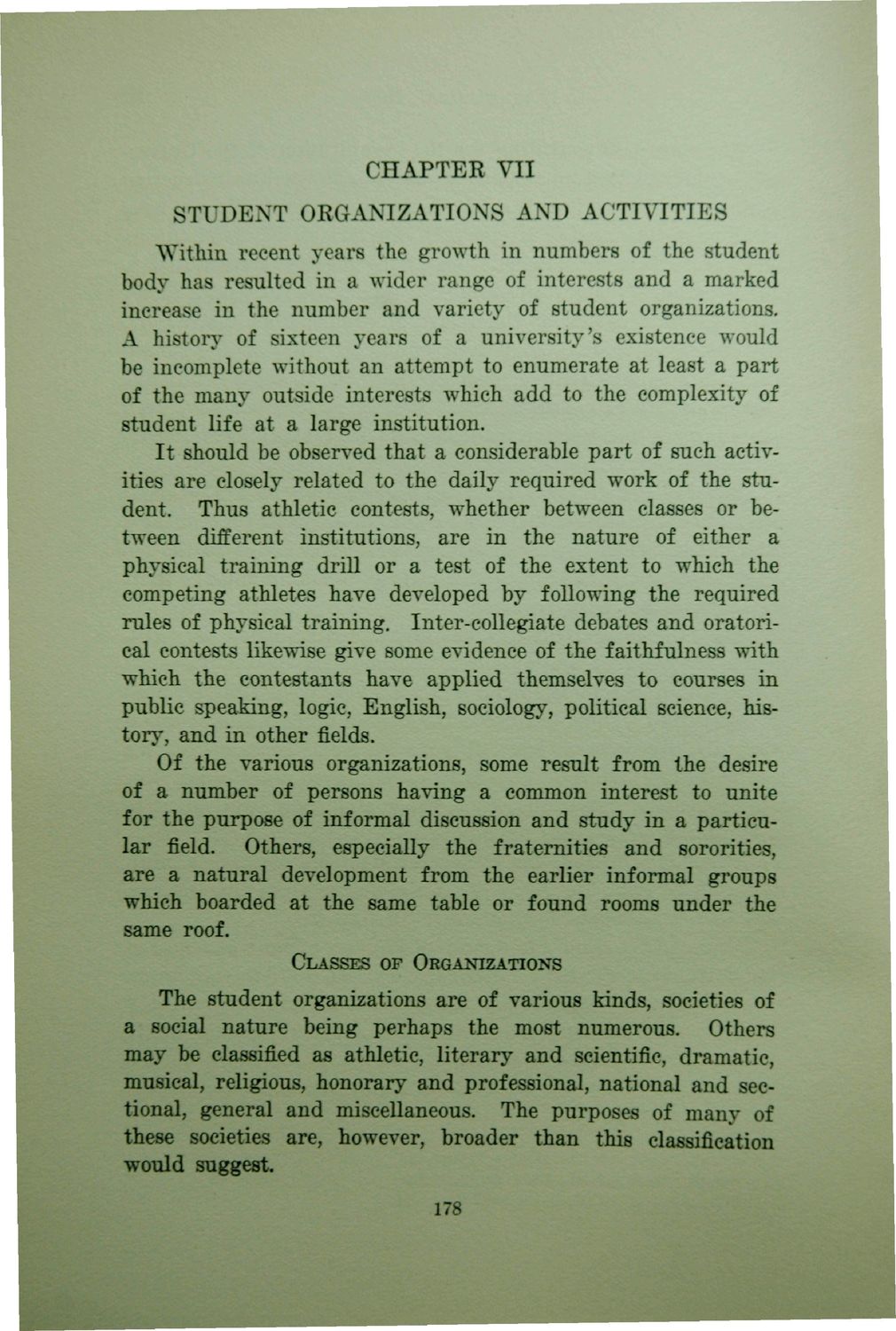| |
| |
Caption: Book - 16 Years (Edmund James)
This is a reduced-resolution page image for fast online browsing.

EXTRACTED TEXT FROM PAGE:
CHAPTER VII STUDENT ORGANIZATIONS AND ACTIVITIES Within recent years the growth in numbers of the student body has resulted in a wider range of interests and a marked increase in the number and variety of student organizations, A history of sixteen years of a university's existence would be incomplete without an attempt to enumerate at least a part of the many outside interests which add to the complexity of student life at a large institution. It should be observed that a considerable part of such activities are closely related to the daily required work of the student. Thus athletic contests, whether between classes or between different institutions, are in the nature of either a physical training drill or a test of the extent to which the competing athletes have developed by following the required rules of physical training. Inter-collegiate debates and oratorical contests likewise give some evidence of the faithfulness with which the contestants have applied themselves to courses in public speaking, logic, English, sociology, political science, history, and in other fields. Of the various organizations, some result from the desire of a number of persons having a common interest to unite for the purpose of informal discussion and study in a particular field. Others, especially the fraternities and sororities, are a natural development from the earlier informal groups which boarded at the same table or found rooms under the same roof. CLASSES OP ORGANIZATIONS The student organizations are of various kinds, societies of a social nature being perhaps the most numerous. Others may be classified as athletic, literary and scientific, dramatic, musical, religious, honorary and professional, national and sectional, general and miscellaneous. The purposes of many of these societies are, however, broader than this classification would suggest. 178
| |